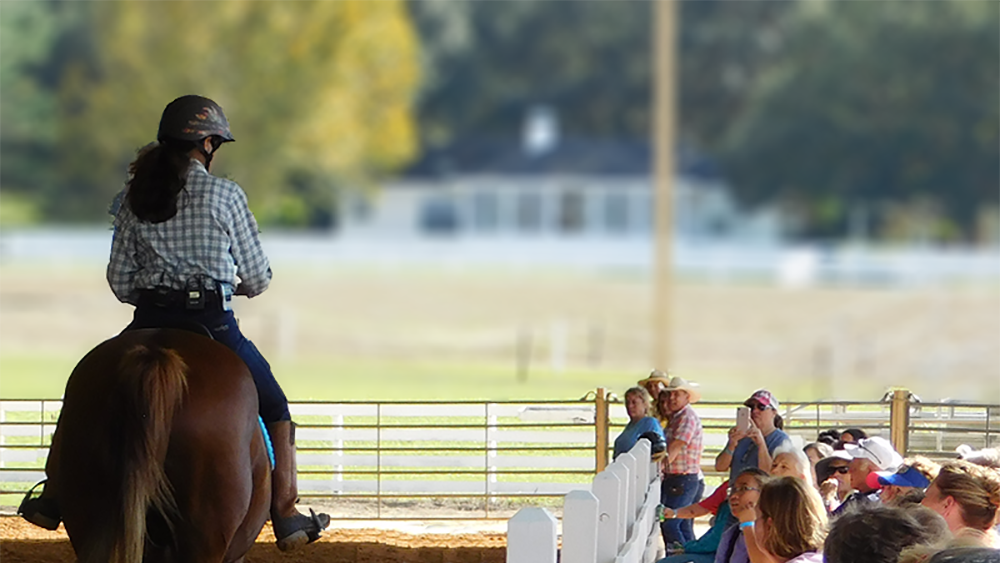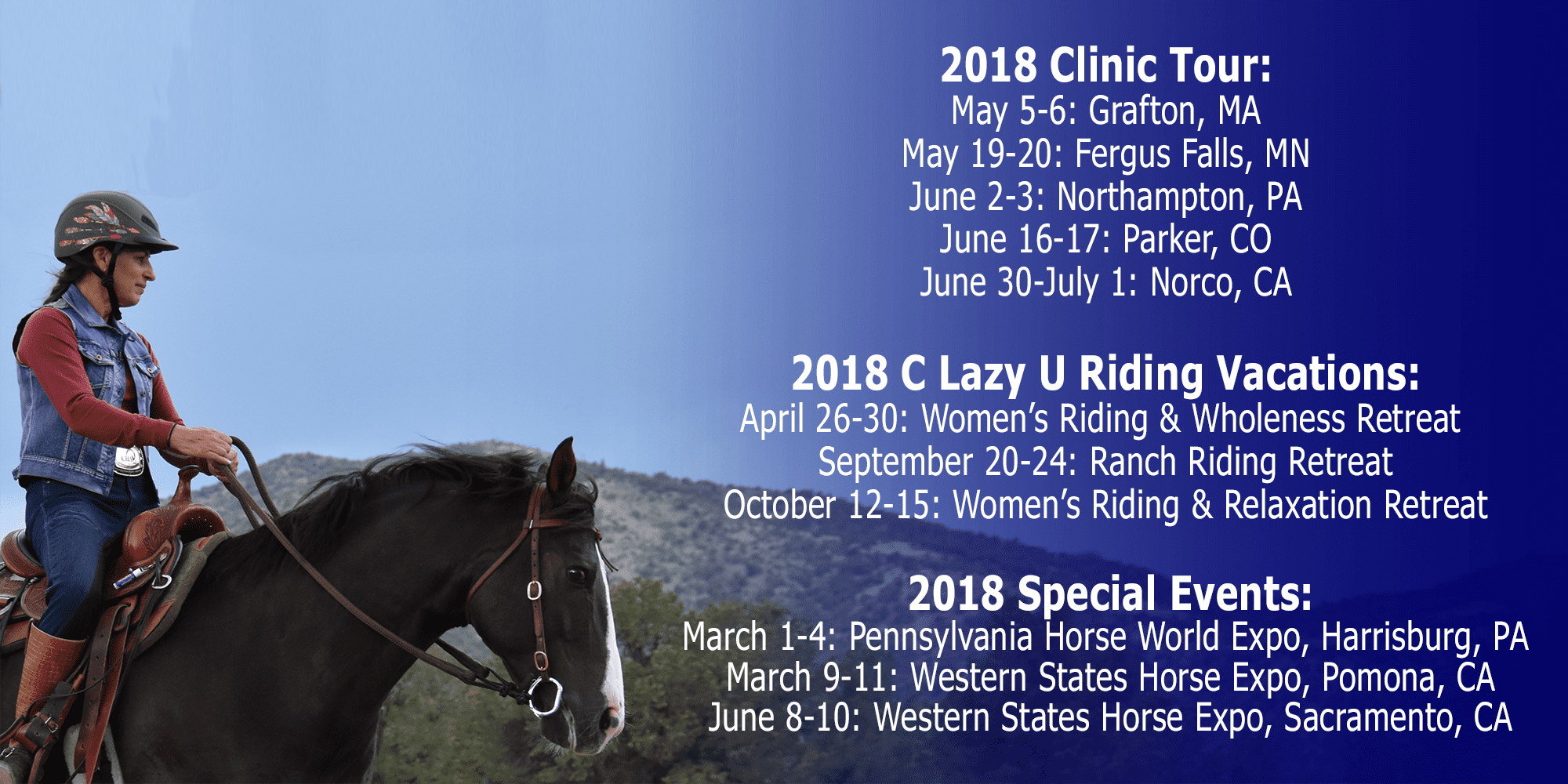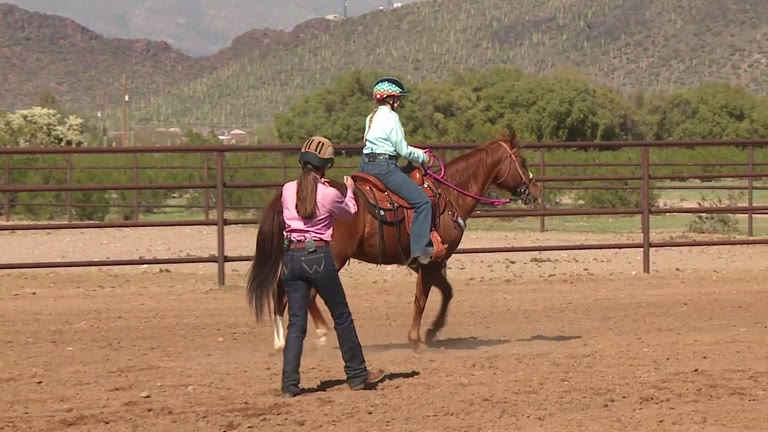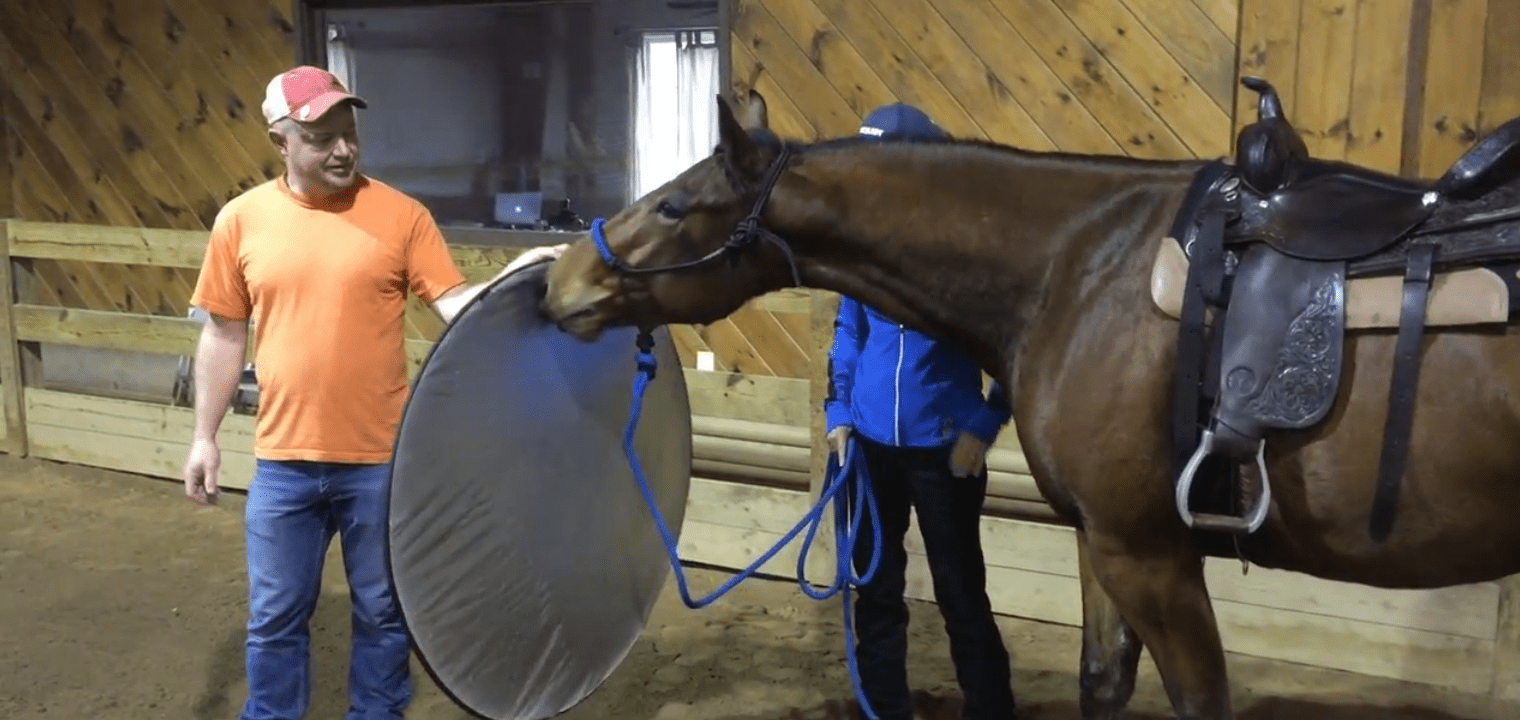For some, attending a horsemanship clinic with a particular clinician, is a bucket-list item that they work toward for years. For others, attending horsemanship clinics with teachers who are leaders in the field is a way to further their careers and boost their horsemanship. And then there are the “clinic junkies,” who spend a good portion of every riding season trying to bag as many clinics as they can. (One summer, my husband attended eight different clinics! He also won a year-end award for most-improved in the ranch horse association, so it paid off!)
In theory, attending a horsemanship clinic—either as a rider or spectator—should be an inspiring, motivating and fulfilling event.
It’s a time to observe, explore innovative ideas, and immerse yourself in your passion; an opportunity to learn from a renowned professional, expand your horsemanship and grow as a rider. Sadly, not everyone has a blissful experience at a clinic. Choosing the right clinician, getting organized ahead of time and preparing yourself and your horse will set you up for success.
I’ve been teaching horsemanship clinics for a couple decades now, but I certainly didn’t start my career as a clinician.
I first started teaching riding lessons when I was 16, assisting at a small boarding and lesson farm in Florida. My introduction to group riding lessons came a couple years later when I taught for two summers at a youth camp—two of us taught five 1-hour lessons, 40-50 students a day, six days a week, all summer long. By the time I was 19, I was quite proficient at keeping order and managing traffic flow in an arena full of horses and riders. Little did I know then, I would draw on this experience 20 years later.
Although my passion for horses had more to do with studying behavior and science-based training techniques, I realized something important early on in my career. I could be the best horse trainer in the world, but it wouldn’t matter if I couldn’t teach the rider or handler to have the same success with the horse. So, as I honed my knowledge and training skills, I also had to hone my teaching and communication skills. After all, horses don’t pay the bills—people do.
Like most “horsemanship clinicians,” I spent years—decades, really—teaching individuals and small groups and developing my skills as a horse trainer before I started teaching clinics. I stopped teaching lessons to individuals more than a decade ago, and for the past 15 years I’ve been teaching horsemanship clinics from coast to coast and abroad.
Through my work with the Certified Horsemanship Association, I am still actively involved with educating and certifying riding instructors, but conducting horsemanship clinics now is my main gig.
How is a Clinic Different from a Lesson?
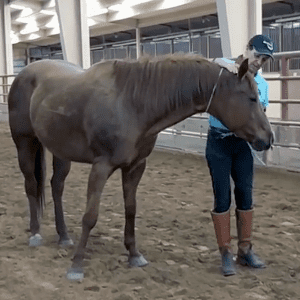 Clinics are typically taught by someone who is an expert in a particular area of horsemanship, with the experience and depth of knowledge to manage any situation. They are usually taught by someone with a higher level of expertise and/or contains content you would not normally get in a riding lesson. Horsemanship clinics are limited in availability and may require you to travel with your horse. They tend to be costlier in time and money than lessons, but for a great clinic it’s money well spent!
Clinics are typically taught by someone who is an expert in a particular area of horsemanship, with the experience and depth of knowledge to manage any situation. They are usually taught by someone with a higher level of expertise and/or contains content you would not normally get in a riding lesson. Horsemanship clinics are limited in availability and may require you to travel with your horse. They tend to be costlier in time and money than lessons, but for a great clinic it’s money well spent!
Not only will a horsemanship clinic connect you to a higher level of training or expertise, it is an opportunity to get an objective evaluation– of your riding, of your horse’s training, your tack, your goals– from a professional who has a broad perspective from working with hundreds or thousands of horses and riders, and who has no preconceived notions about you and your horse. Sometimes these objective and experienced eyes will pick up on things that you haven’t, offer innovative ideas or remove roadblocks.
The format for horsemanship clinics can vary a lot, depending on the riding activities and the clinician.
They may be discipline-specific (dressage, jumping, cutting, barrel racing, trick training) or more general in nature (groundwork, riding, colt-starting). Most of my clinics are general horsemanship, which means we address everything from groundwork, to leadership skills, to riding skills, to improving the performance of the horse in any discipline.
Some horsemanship clinics will be taught like a series of private lessons that are given in front of an audience, over a PA system. Dressage clinics are usually that way—the clinician works with the riders one at a time, one after the other, and others pay to watch, observe and learn. The one-on-one attention is less pressure than riding in a large group of unknown horses, but the rider is under a microscope from the clinician and audience. The number of riders that can be addressed in one day is also very limited.
Other clinic formats will have all the riders in the arena at the same time, with the groups as large as 10-20 riders. Performing in a large group in front of an audience brings unique challenges for both the horse and rider. It also has the potential to greatly expand the training and confidence of both horse and rider. Inexperienced horses can be overwhelmed at first—excited by all the unknown horses, and nervous in a new setting.
It’s the role of the clinician to help the horses settle in and teach the riders how to cope. It’s an excellent experience for a young or green horse and should advance their training significantly.
Another unique quality of a horsemanship clinic versus a riding lesson is that there are usually auditors—spectators who have paid to observe the clinician as she/he works with the horses and riders. This can be nerve-wracking for the riders (and for the horses when the spectators laugh, applaud or open an umbrella), but is an excellent and cheap source of information for the spectator.
Auditing horsemanship clinics is an excellent source of continuing education for riding instructors and horse trainers, because it allows you to observe all the different horses and see how the clinician adjusts the techniques to the specific needs of the student.
Finding the Right Clinic
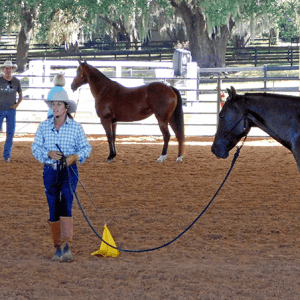 Before signing up for any clinic, you should already have an idea of your purpose, your goals and what you hope to achieve. Is it to gain experience for a young horse, to get continuing education as a professional, to upgrade your performance, to build a better relationship with your horse, or to have a fun time with friends and horses?
Before signing up for any clinic, you should already have an idea of your purpose, your goals and what you hope to achieve. Is it to gain experience for a young horse, to get continuing education as a professional, to upgrade your performance, to build a better relationship with your horse, or to have a fun time with friends and horses?
Narrowing down the clinician you hope to work with, the discipline you want to focus on and the budget and time frame you must work within will help you sort through the options as you research the opportunities available in your area.
It’s possible you’ll have to travel a significant way to reach an in-demand clinician, so you’ll have to consider cost and travel logistics. To a degree, supply and demand will dictate the cost of the clinic. Popular clinicians usually come with a higher price tag—and their clinics may be hard to get into because of the high demand. On the other hand, last-minute cancellations can result in a discounted spot. Or, up-and-coming trainers may offer great deals on clinics—just because they aren’t a household name doesn’t mean they aren’t a fabulous trainer and teacher.
If your goals are competitive or focused on a single discipline (like jumping or cutting), narrowing down your options by networking through breed and discipline associations will be easy. Competition-focused clinics are more available, and tend to be more widely promoted.
If you are hoping to attend a clinic for more general reasons—to advance your horse’s training, to improve your riding, to gain confidence—you may have to do more research to find the right clinic for you and your horse.
Beyond expertise and notoriety, the clinician should have other qualities that compel you. Ask around to discover the “word of mouth” reputation of the clinician, preferably from someone who has ridden in one of their clinics. Is the clinician hard-core and driven, supportive and friendly, slow-paced or fast-paced, humble or egotistical, easy to understand or cryptic, witty or dry?
Try to find a clinician whose personality and style of teaching meshes well with yours. If you are a hard-driven competitive rider, you may love the intensity of a high-pressure clinic. If you are timid, inexperienced (you or your horse) or lacking confidence, a demanding clinician may not be an appropriate choice.
Preparation of Horse and Rider
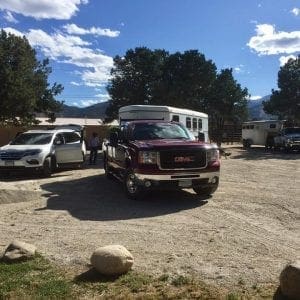 To get the most from a horsemanship clinic, you’ll need to be organized well in advance and have plenty of time to prepare your horse mentally and physically for the experience—it may require up to 6 months to a year of planning. Travelling with your horse—sometimes across state lines—on a multi-day excursion is no small task. For your horse it means sleeping in a strange stall, and being required to perform new skills in a cavernous arena surrounded by strange horses.
To get the most from a horsemanship clinic, you’ll need to be organized well in advance and have plenty of time to prepare your horse mentally and physically for the experience—it may require up to 6 months to a year of planning. Travelling with your horse—sometimes across state lines—on a multi-day excursion is no small task. For your horse it means sleeping in a strange stall, and being required to perform new skills in a cavernous arena surrounded by strange horses.
Larger horsemanship clinics can offer excellent “seasoning” opportunities for young horses, and a great bonding experience and sense of achievement for a horse and rider.
Often people arriving at a clinic for the first time with their horse are surprised that the horse is excited/nervous/exuberant/misbehaving/downright disobedient; often shocked because the horse “never acts that way at home.” A horse’s ability to function perfectly at home—with familiar horses and people—sometimes has little or nothing to do with their behavior in an unfamiliar setting.
It pays to make a few smaller trips with your horse ahead of time to give him a little taste of “life on the road.”
I am never concerned about horses having emotional meltdowns at the beginning of my clinics—to me it is a great “teachable moment.” I relish the opportunity to make a horse feel better about his situation—to educate that horse, bring him into a compliant and contented frame of mind and show the owner what the horse needs. This can happen really fast in a clinic under the right tutelage, and we see some dramatic changes in horses.
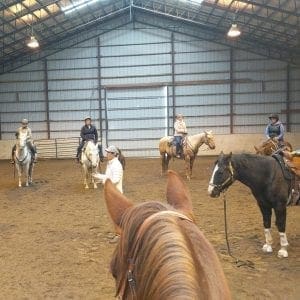
Make sure your horse has the appropriate level of training for the program being offered—be that high or low. Just as it would be unfair to bring a barely-broke 2-year-old to a high-level dressage clinic, or an 18-year-old trail horse to a stadium jumping clinic, it would be inappropriate to bring a world champion reining horse to ride in a colt-starting clinic.
Many horsemanship clinics offer novice and advanced levels; keep in mind it is both the horse and rider’s ability that must be considered.
Both the horse and rider should also be prepared for the physical demands of the clinic. Depending on the type of clinic that you attend, you and your horse may be under-saddle for longer periods than you normally ride. It’s unfair to your horse to go from little or no riding to 5-6 hours in the arena for two or more days in a row.
If you sign up six months ahead of time, even just riding twice a week is enough to get you and your horse prepared. Showing up at a clinic having not ridden much in preparation might be a waste of money (if the horse gets sore or the rider cannot continue), and could be a recipe for failure.
A horsemanship clinic with your horse can be an incredible experience that will boost your horsemanship, your sense of achievement and your confidence. It should leave you with a renewed passion, eager to get home and try all the new techniques you learned. If you choose the right clinic for you and your horse, plan ahead, get organized, and prepare, you and your horse will both be set up for success!
Enjoy the Ride!

(Want to find out more about riding in or watching one of my clinics? Check my clinic schedule and see if I’m coming to an arena near you!)
